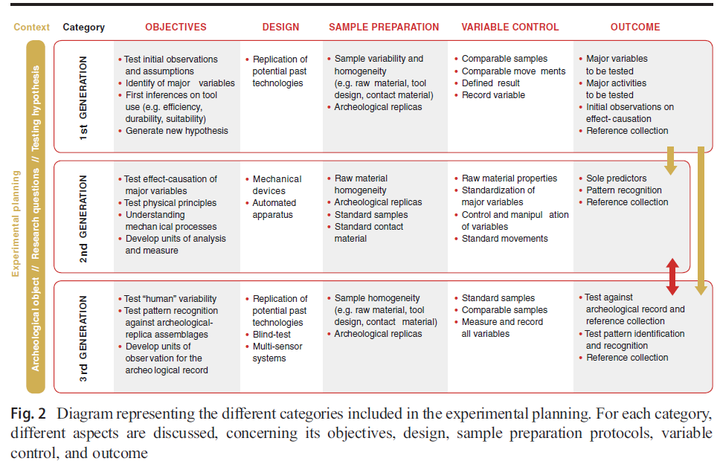Rethinking Use-Wear Analysis and Experimentation as Applied to the Study of Past Hominin Tool Use

Abstract
In prehistoric human populations, technologies played a fundamental role in the acquisition of different resources and are represented in the main daily living activities, such as with bone, wooden, and stone-tipped spears for hunting, and chipped-stone tools for butchering. Considering that paleoanthropologists and archeologists are focused on the study of different processes involved in the evolution of human behavior, investigating how hominins acted in the past through the study of evidence on archeological artifacts is crucial. Thus, investigating tool use is of major importance for a comprehensive understanding of all processes that characterize human choices of raw materials, techniques, and tool types. Many functional assumptions of tool use have been based on tool design and morphology according to archeologists’ interpretations and ethnographic observations. Such assumptions are used as baselines when inferring human behavior and have driven an improvement in the methods and techniques employed in functional studies over the past few decades. Here, while arguing that use-wear analysis is a key discipline to assess past hominin tool use and to interpret the organization and variability of artifact types in the archeological record, we aim to review and discuss the current state-of-the-art methods, protocols, and their limitations. In doing so, our discussion focuses on three main topics: (1) the need for fundamental improvements by adopting established methods and techniques from similar research fields, (2) the need to implement and combine different levels of experimentation, and (3) the crucial need to establish standards and protocols in order to improve data quality, standardization, repeatability, and reproducibility. By adopting this perspective, we believe that studies will increase the reliability and applicability of use-wear methods on tool function. The need for a holistic approach that combines not only use-wear traces but also tool technology, design, curation, durability, and efficiency is also debated and revised. Such a revision is a crucial step if archeologists want to build major inferences on human decisionmaking behavior and biocultural evolution processes.